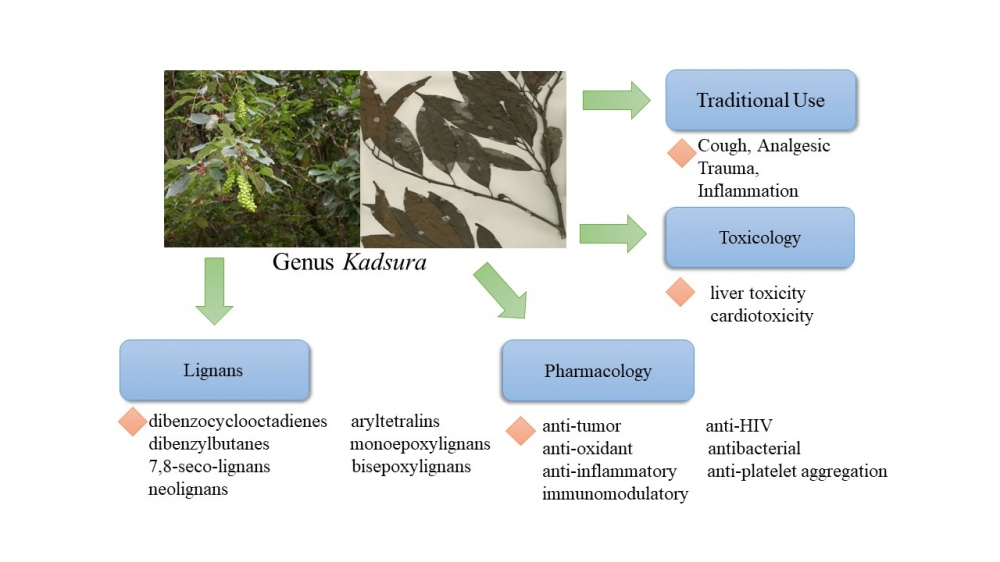JOURNAL 2765
Records of Natural Products
Year: 2023 Issue: 5 September-October
p.793 - 844
Viewed 2747 times.
GRAPHICAL ABSTRACT

ABSTRACT
The genus Kadsura is an important part of traditional Chinese medicine, it has the functions of promoting wind, eliminating dampness, activating blood circulation. Modern pharmacological studies have shown that lignans are one of the main components to possess these medicinal effects. This review aimed to provide a systematic summary on the traditional use, phytochemistry, pharmacology, toxicology and other aspects of lignans in genus Kadsura. In this paper, we collected the relevant literature on Kadsura lignans from 1973 to the present, and isolated more than 337 lignans from this genus, including dibenzocyclooctadienes, aryltetralins, tetrahydrofurans, diarylbutanes, 7,8-seco-lignans, bisepoxylignans, neolignans, seco-dibenzocyclooctadienes, sesquilignan and coumarin-containing lignan. Previous pharmacological studies have shown that lignans of the genus Kadsura have antitumor, anti-inflammatory, antibacterial, anti-HIV, anti-platelet aggregation, immunomodulatory and antioxidant effects. In clinical practice, it is commonly used to treat Alzheimer's disease, inflammation and insomnia. Kadsura is an important part of the field of Chinese medicine and is widely used in traditional medicine. However, further clarification of its active ingredients and mechanism of action and the establishment of a complete quality standard system are needed in order to provide a scientific basis for in-depth studies of this genus.
KEYWORDS- Kadsura
- traditional use
- Lignans
- pharmacology
- toxicity